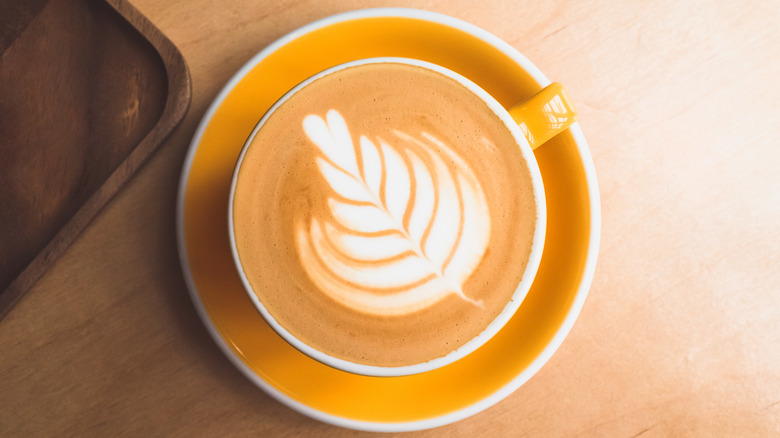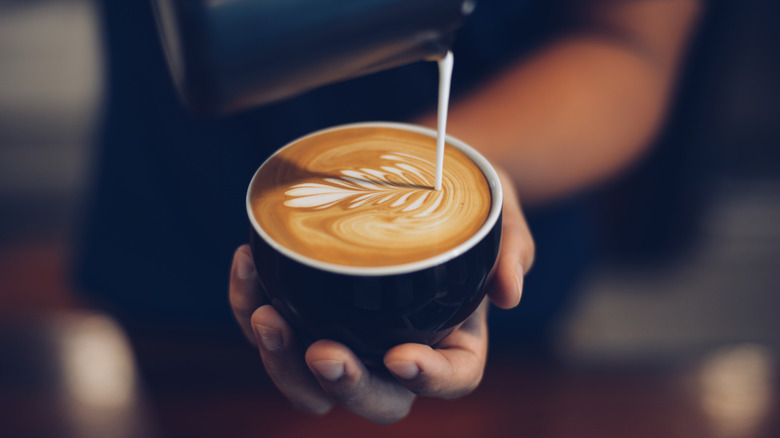When Did Latte Art Become The Go-To Way To Finish The Drink?
Remember when coffee was only consumed black? Neither do we. In addition to all the standard coffee drinks out there –- think cappuccinos, mochas, and lattes –- the ever-increasing popularity of coffee in America has fueled a plethora of new trends. Many of these are created by coffee chains, such as Starbucks Frappuccinos and Pumpkin Spice Lattes. And while coffee used to be an adult beverage that children deemed too bitter, Gen Z is starting to drink it at a younger age with a particular love for jazzed-up coffee drinks, according to Coffee Affection.
Many modern coffee beverages are influenced by wellness trends on social media. Peet's is bringing back its golden lattes with antioxidant-packed turmeric and ginger flavors, for example. Or consider protein coffee, which became well-known as a TikTok trend and involves blending protein powder into coffee drinks, according to the Webstaurant Store.
Some zhuzhed up drinks are created primarily for aesthetics, however. New York City's REMI Flower & Coffee is part coffee shop, part flower shop, and makes beautiful, brightly colored coffee drinks inspired by their florals. And you'd be hard-pressed to find a coffee shop that doesn't use latte art for at least one drink. But although this trend is still thriving on social media today, latte art has been around for longer than you may expect.
Latte art took off in the 1980s
In 2017, Foresight Factory shared that they'd seen a 4,500% increase in photogenic coffee Instagram posts, noting that the hashtag #latteart was particularly popular. Since the latte was the third-most-popular beverage in U.S. coffee shops in 2020, according to Project Café USA, it makes sense that baristas and coffee shops would be eager to embrace a trend that makes their drinks more Instagrammable (via Perfect Daily Grind).
But although latte art has distinctly modern advantages, it was actually originally invented in Italy, according to Barista Institute. However, Seattle coffee shop owners David Schomer and Jack Kelly are credited with making latte art a mainstream sensation in the 1980s, according to New Ground Mag. While experimenting with making designs out of steamed milk, they created the rosette shape, which is now a staple in latte art.
In a 1994 article written about his shop Espresso Vivace, Schomer explains that he created the heart-shaped latte art in 1988 as well. He wrote, "Yes, we do it on purpose. The intent is to promote respect for caffe espresso as a culinary art that emphasizes flavor, a silky feel, and stunning presentation possibilities."
Fast forward to today, and the World Latte Art Championship exists as a global competition for latte artists to battle it out in categories like creativity, visual attributes, and contrast in patterns. It's safe to say that Schomer's dream of latte art becoming a culinary art has been realized.

